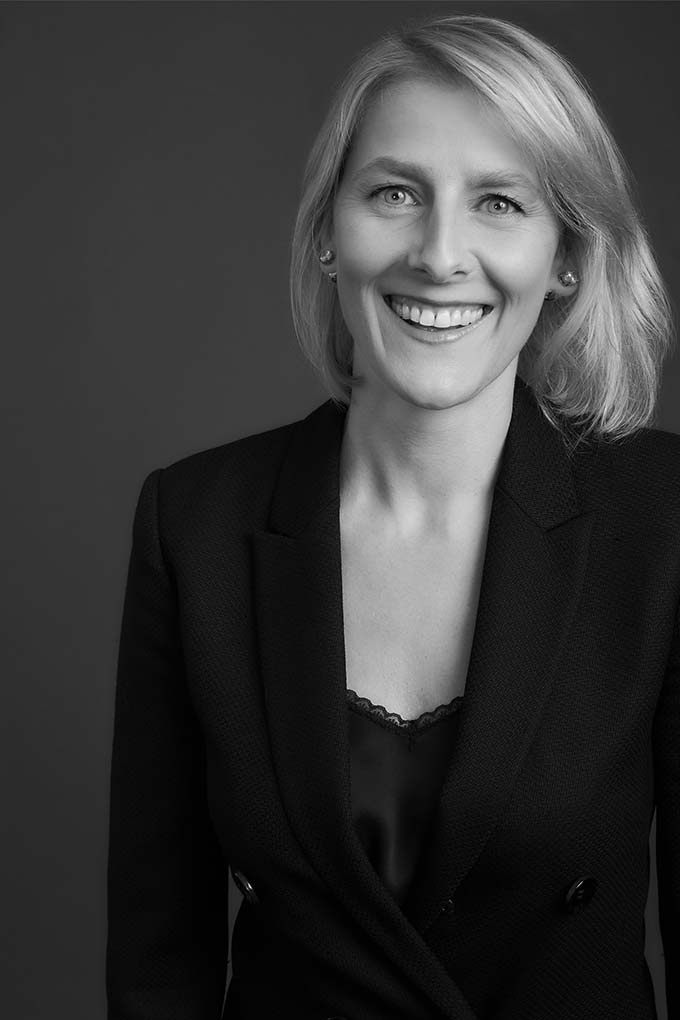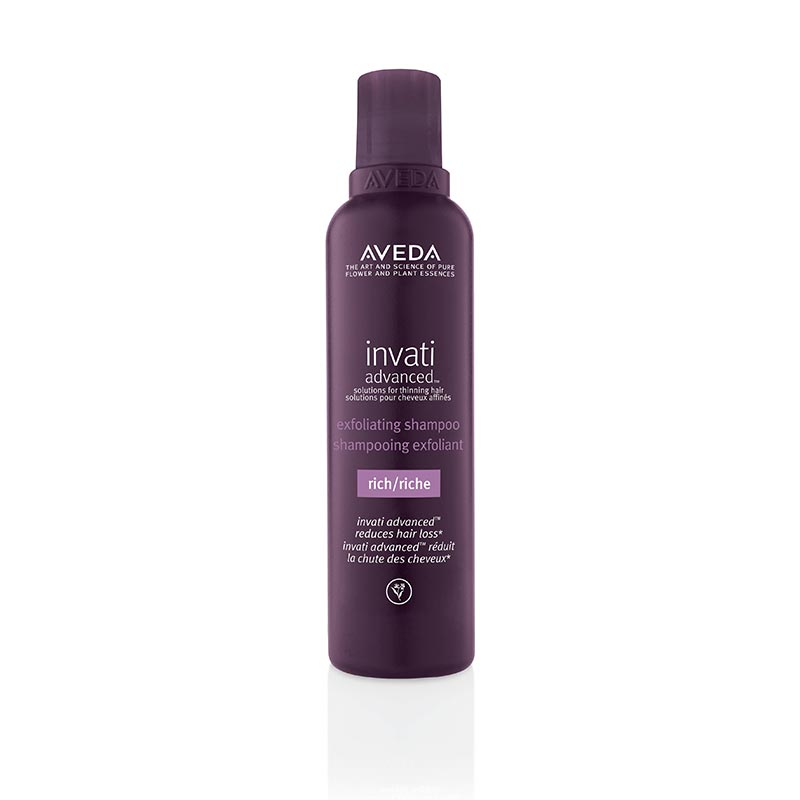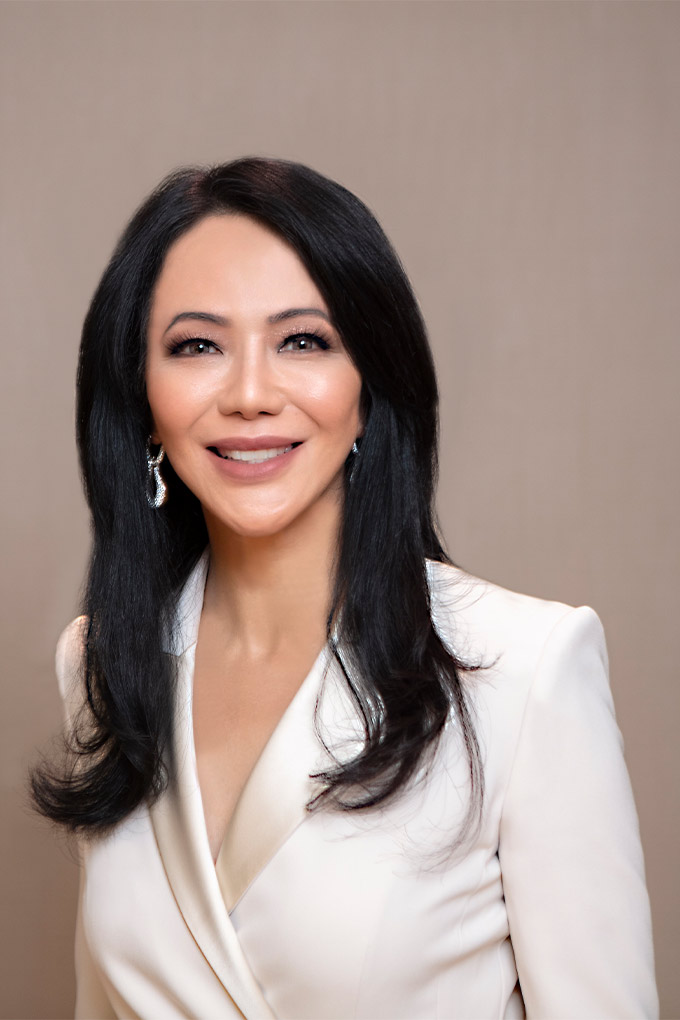Nobody could have predicted the wild ride 2020 turned out to be, but with their eye on data and finger on the pulse of science, sustainability, aesthetic medicine and dermatology, these gamechangers share the key trends that are set to shake and shape the beauty industry in 2021.
Barbara De Laere, global president of Aveda

What beauty or wellness trends in 2020 took you by surprise?
A few trends that took me by surprise or exceeded expectations include:
- Self-care from the inside out—the emphasis on meditation and mental health can be seen in the growth of that industry with some meditation apps reporting a 3000 per cent increase in time spent on the app. We see this extending to what we’re calling “wellness beauty”—the idea of tending to what’s on the outside and inside as a form of self-care. Our hair mask category saw huge growth this year as people sought to really pamper themselves at home.
- The growing shift to plant-based diets and the rise of the alternative-meat industry—especially in Asia. It is not unreasonable to say that by the end of 2020, the number of vegans in the world might jump to 3% of the population (vegan statistics—future kind+, April 9 2020).
- We’ve seen growth in the health supplement category, especially products that boost immunity and help alleviate the side effects of stress, like hair loss. Sadly, there’s been a huge increase in hair loss this year—both as a side effect of COVID-19 and as a byproduct of the stress of living through a pandemic. This has been borne out by the continued growth of our Invati Advanced Collection, which is designed to strengthen hair and reduce hair loss.

What are your beauty and wellness predictions for 2021?
I think we will continue to see a huge shift towards transparency in the beauty industry. We are starting to see it in fashion with companies like Everlane, but I believe beauty will increasingly be held to the same standard. This has always been important to us at Aveda, which is why we have an online ingredient glossary that features over 100 ingredients that are found in our products. Along with several other initiatives geared towards supply chain transparency, adding to this glossary will be a focus for us in 2021 and beyond.
Along similar lines, I also believe we will continue to see an emphasis on clean and safe ingredients. Consumers are increasingly more concerned about where their products are made and the effect they can have on their own health. This is one reason we are so proud to announce our transition to 100 per cent vegan. I think we will see more nourishing ingredients, like Sacha Inchi. We use this in our Botanical Repair franchise.
Finally, a back to basics philosophy—which we are excited about! We believe that “Nature is the best beauty artist of all” and we are starting to see more
simple, sustainable beauty routines with high-performance, natural and naturally-derived ingredients at the core.
How will beauty brands be more mindful about issues like sustainability, inclusivity/diversity?
With the rising trend of ‘ethical beauty,’ consumers care a lot more about the heart and soul, or the mission of brands. They are holding brands accountable like never before, and I believe we’ll continue to see companies respond by increasing their social responsibility efforts; evaluating how the work they do impacts the planet; and truly assessing what it means to be diverse and inclusive, from their hiring practices to the products they develop and the content they create. I’m proud of the work Aveda has done and continues to do on all of these fronts. We took meaningful steps to infuse inclusion and diversity in every aspect of the business, including increasing performance testing 5X to deliver claims for all hair types and textures and launching an industry leading textured hair education training program for our network of Aveda Artists. On the sustainability front, we have achieved many milestones this year, from our transition to 100 per cent vegan to the unveiling of the solar array at our brand headquarters, which provides up to 50 per cent of our manufacturing facility’s annual demand.
“Consumers are holding brands accountable like never before”
Aveda is a pioneering in environmental leader in the beauty industry, what will the future of beauty and self-care be?
I think the future of beauty will be—has to be—sustainability. Additionally, I believe that true self-care can’t be achieved without clean and safe ingredients in beauty products. I anticipate an explosion of demand from consumers wanting to know what is in the products they put on their body and how it affects them and the environment. The good news is that we know that you don’t have to compromise efficacy to have sustainable or safe products. You can have performance, colour pay-off and long-lasting results by using products that are good for you and good for the planet.
Dr Sylvia Ramirez, medical and scientific director of Cutis Medical Laser Clinics

What aesthetic trends in 2020 took you by surprise?
Muscle Stimulation treatments took me by surprise. Z field uses electrical impulses specifically designed to stimulate motor nerves that then lead to muscle contraction. I thought that people would rather work out than use a machine to stimulate their muscles but we’ve found that even fit athletes appreciate the benefits of this procedure. The targeted focused contraction leads to faster results in definition and size of muscles, especially the ‘six-pack’. Now, I’m using the machine at every opportunity for myself.
Although I anticipated that exit from Singapore’s circuit breaker would result in pent-up demand for aesthetic treatments, the demand for treatments has persisted. I don’t think this is about vanity, but because of several reasons: First, our sense of well-being is impacted by our external appearance. Second, there is more discretionary income because we cannot travel. As a patient said recently, “all we can do is eat out and do Botox”. Finally, because many patients now work from home, they are more willing to try procedures that they have not had the time nor courage in the past. Think lip fillers, which surprisingly increased in demand in our clinic.
Share your aesthetic predictions for 2021.
I think that all of us are rethinking our priorities, and putting our personal ones have become more relevant. Patients make coming in and ‘being the best that they can be’ a priority. Those who have hesitated to try new treatments in the past, such as fillers, are suddenly more committed to finding ways to improve themselves. Our no-show rates have dropped to almost zero. I think this attitude will persist and only continue to grow in 2021.
In terms of skincare, I approach and present skincare to my patients as a pyramid. Focus on the base of the pyramid, with basics like vitamin C, vitamin A and sunblock. Rising up the pyramid would be the discretionary products which are good to use. These include proven forms of peptides and growth factors. Some of these are backed by clinical studies but are not stand-ins for the first three basics above. Growth factors have been shown to increase collagen and elastin formation in well designed clinical studies. I’m always on the hunt for clinically-backed growth factors, and the one that intrigues me the most are human growth factors, such as those in TNS recovery complex. Growth factors can interact with cells in our skin to stimulate fibroblasts. Currently, these are not approved in Singapore, however (such as TNS recovery complex by Allergan).
What innovations or beauty trends are you most excited by?
There are 3 innovations that I am closely following:
- The first is a new innovation in botulinum toxin treatments. As we know, these injections are always the number one non-invasive treatment, and demand will only continue to grow. The existing brands of botulinum toxin, typically require re-treatment in 3 to 4 months. Now, a new toxin (doxibotulinum Toxin A) is expected to receive FDA approval in 2021, and this promises a longer lasting effect than the ones that we have today.
- Second, I am closely watching an exciting innovation in dermal fillers. The majority of the safest and most-proven fillers are made of hyaluronic acid and one brand of calcium fillers. The difference with these two is the degree of collagen stimulation, hydration, lifting capacity, and treatment application Now, a combined hyaluronic acid/calcium hydroxyapatite filler (known as HarmonyCA) produced by Luminera has recently been purchased by Allergan, and with further testing and development, these are likely to combine the strongest advantages of both forms of fillers.
- Finally, I am excited about further advances in body contouring treatment. Body contouring has continued to be one of the fastest growing areas for non-invasive aesthetics. With current available devices such as Coolsculpting and Z-lipo, a patient has to sit and wait for each target area. In a recent study, injection with an ‘ice slurry’ or ice mixture, has been shown to reduce up to 55 per cent of fat in the treatment area. Now, this will still take some time for clinical use as this technique has only been tested in an animal study. But the published results are quite promising. Imagine in the future, with this injectable ice solution or ‘slurry’, after a simple injection that takes just a minute, the patient can back to their daily life and the fat gradually disappears. Let’s wait and see!
Dr Dennis Gross, founder of Dr Dennis Gross skincare

What skincare trends in 2020 took you by surprise?
I don’t think any of us expected a pandemic in 2020—as a dermatologist, I had to close down my practice temporarily. My inbox was flooded with virtual consultation requests to evaluate and treat skin conditions like maskne which was never a big concern prior. I was also pleasantly surprised with how easily everyone became comfortable with communicating online.
Share your skincare predictions for 2021.
People will start to prioritise their body skin in 2021—investing in clinical skincare products for both their face and from the neck down. In my practice, the number of patients requesting laser treatments for their body equals that of the face. Scented lotions and sugar scrubs, while soothing, won’t cut for consumers who are looking for real results. They will want to see real clinical studies proving that body products address crepey skin, blemishes, KP or keratosis pilaris, and loss of laxity in body skin.
“The number of patients requesting laser treatments for their body equals that of the face”
How will beauty brands be more inclusive when it comes to diversity?
Skincare brands will test on all Fitzpatricks—and go a step beyond that. They will show before and after imagery on multiple skin tones and ensure that their marketing and social imagery shows a variety of people. They will onboard a diversity specialist and delegate a special internal task force to meet and discuss how diversity within the organisation can improve.
Mathilde Thomas, founder of Caudalie

What beauty or wellness trends in 2020 took you by surprise?
The topic on maskne has been one of the main highlights this year due to the pandemic. Our natural and clean Vinopure collection for acne-prone skin with natural salicylic acid became a bestseller overnight. And so did the Instant Detox Mask that absorbs impurities, cleanses imperfections and tightens pores. And of course, Caudalie Beauty Elixir, an antibacterial mist that you spray on your skin under your mask.

Share your skincare predictions for 2021.
I believe that in 2021:
- Women will want to have the most effective problem-solving skincare with technology that boosts your own immune system, collagen and hyaluronic acid levels.
- There will be a higher demand in skincare with cleaner formulas, no hormonal disruptors.
- A greater need for non-irritating, gentle, natural ingredients.
- Consumers will be in search of sustainable, eco-friendly packaging.
Moving to innovations, for the past eight years, we have been working with acclaimed Harvard Medical School Doctor David Sinclair, professor of genetics and co-director of the Paul F. Glenn Center for the Biology of Aging at Harvard. One of Time magazine’s 100 most influential people on earth, Dr Sinclair is the author of the New York Times best seller “LIFESPAN, why we age and why we don’t have to”. Together with Caudalie Lab of natural formulation we co-filed innovative patents on reverse ageing molecules. The latest trend is a patented duo two times more effective than retinol to boost collagen. And a trio that boost five times your own collagen, and double your own hyaluronic acid.
What issues will beauty brands focus on in 2021?
Sustainability. We pledge to be a zero-waste brand by the end of 2022. We reduce, recycle and reuse our packs. Our packaging will be recycled, recyclable or refillable by the end of 2022. On the other hand, Caudalie commits to giving back 1 per cent of its sales to plant trees since 2012 as the leading beauty member of the 1% For The Planet. 8 million trees have been planted, four times our carbon footprint compensated potentially. Caudalie started a new project – 100% PLASTIC COLLECT where we collect and recycle the equivalent of our yearly plastic consumption.
Just like our retail partner, Sephora, “we see, welcome, and celebrate those who come from diverse backgrounds, and we place an unrelenting commitment to inclusivity at the centre of all we do”. We try to include more and more diversity in our content.





